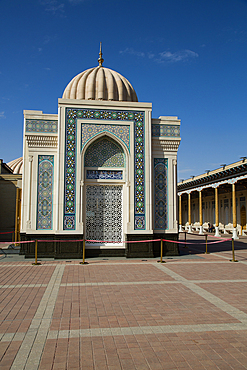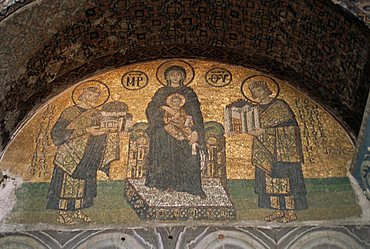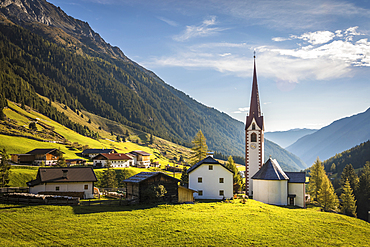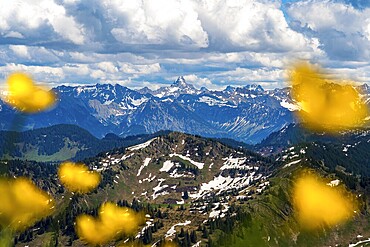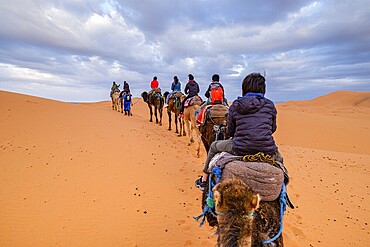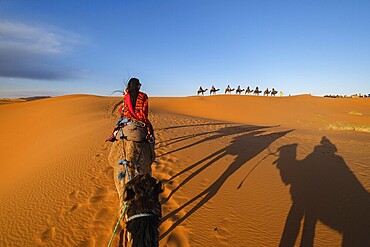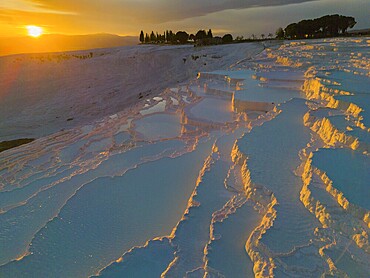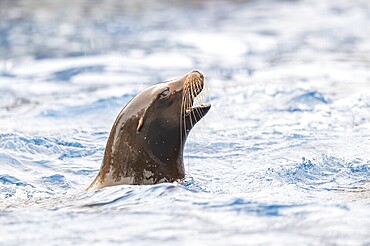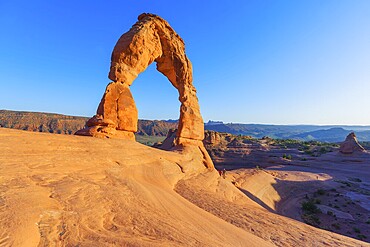Results
« Previous 1 2
148 results found
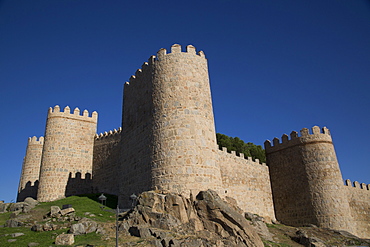
City Wall, originally built in the 12th century, Avila, UNESCO World Heritage Site, Castile and Leon, Spain, Europe

View of Hagia Sophia, originally a 6th century church, then a mosque and later a museum before its official reconversion in 2020, from Sultanahmet Park between the Blue Mosque and Hagia Sophia, UNESCO World Heritage Site, Istanbul, Turkey, Europe
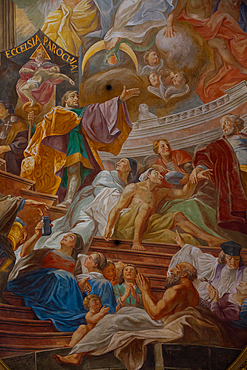
Interior, Ceiling Frescoes by Cosmas Damian, Heilig Geist Church, originally founded in the 14th century, Old Town, Munich, Bavaria, Germany, Europe
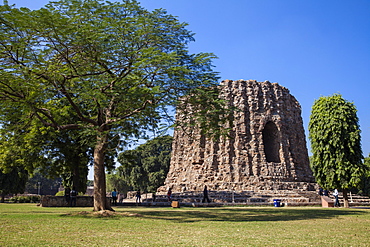
Qutub Minar, Atai Minor, an incomplete tower originally intended to be twice as high as Qutub Minar, UNESCO World Heritage Site, Delhi, India, Asia

Great Kiskadees (Pitangus Sulphuratus), originally introduced to Bermuda in 1957 to try to control the Anole lizard, Bermuda, Atlantic, Central America

Mole Antonelliana, originally a synagogue, sold to the city, of which it is now a symbol, Turin, Piedmont, Italy, Europe
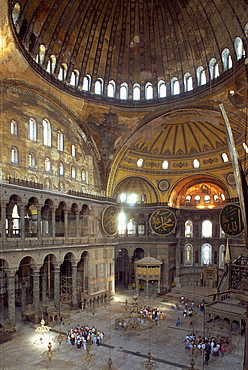
Interior of the Santa Sofia Mosque, originally a Byzantine church, UNESCO World Heritage Site, Istanbul, Turkey, Europe
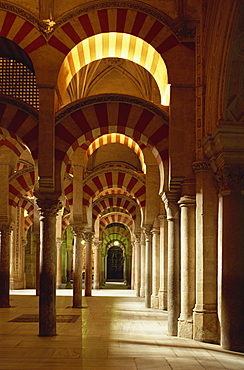
Interior of the Mezquita or Mosque at Cordoba, originally an Islamic building, now containing a Christian cathedral, UNESCO World Heritage Site, Cordoba, Andalucia (Andalusia), Spain, Europe

U Bein's Bridge, the longest teak span bridge in the world, originally supported by 984 teak posts, Taungthaman Lake, Amarapura, Mandalay, Myanmar (Burma), Asia

U Bein's Bridge, the longest teak span bridge in the world, originally supported by 984 teak posts, Taungthaman Lake, Amarapura, Mandalay, Myanmar (Burma), Asia
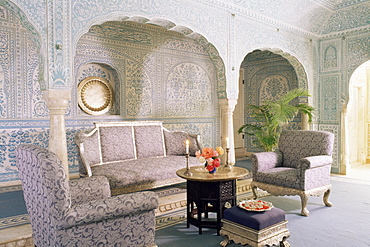
Seating area in an ante-room to the Grand Durbar Hall, with silver furniture originally from Nepal, Samode Palace, Samode, Rajasthan state, India, Asia

Inside The Citadel (Qala-i-Ikhtiyar-ud-din), originally built by Alexander the Great, but built in its present form by Malik Fakhruddin in 1305 AD, Herat, Afghanistan, Asia
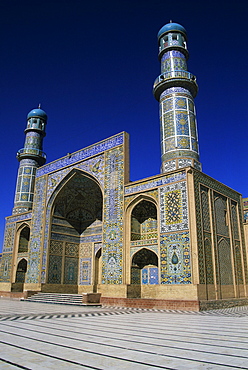
Friday Mosque (Masjet-eJam), restored since 1943, originally laid out in the year 1200 by the Ghorid Sultan Ghiyasyddin on the site of an earlier 10th century mosque, Herat, Afghanistan, Asia

The minaret of Bahram Shah, one of two minarets built by Sultan Mas'ud III and Bahram Shah with square Kufic and Noshki script, that served as models for the minaret of Jam, and believed to have originally been part of mosques, Ghazni, Afghanistan, Asia
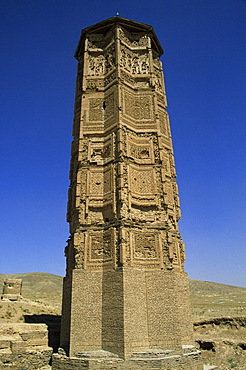
The minaret of Sultan Mas'ud III, one of two minarets built by Sultan Mas'ud III and Bahram Shah with square Kufic and Noshki script, that served as models for the minaret of Jam, and believed to have originally been part of mosques, Ghazni, Afghanistan, Asia
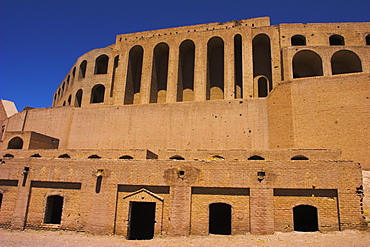
Inside the Citadel (Qala-i-Ikhtiyar-ud-din), originally built by Alexander the Great, but in its present form by Malik Fakhruddin in 1305AD, Herat, Herat Province, Afghanistan, Asia
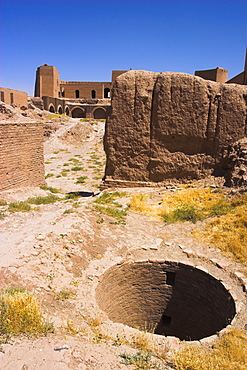
Well inside the Citadel (Qala-i-Ikhtiyar-ud-din), originally built by Alexander the Great, but in its present form by Malik Fakhruddin in 1305AD, Herat, Herat Province, Afghanistan, Asia

Inside the Citadel (Qala-i-Ikhtiyar-ud-din), originally built by Alexander the Great, but in its present form by Malik Fakhruddin in 1305AD, Herat, Herat Province, Afghanistan, Asia

Timurid tilework on tower of the Citadel (Qala-i-Ikhtiyar-ud-din), originally built by Alexander the Great, but in its present form by Malik Fakhruddin in 1305AD, Herat, Herat Province, Afghanistan, Asia

The Citadel (Qala-i-Ikhtiyar-ud-din), originally built by Alexander the Great, but in its present form by Malik Fakhruddin in 1305AD, Herat, Herat Province, Afghanistan, Asia

The Citadel (Qala-i-Ikhtiyar-ud-din), originally built by Alexander the Great, but in its present form by Malik Fakhruddin in 1305AD, Herat, Herat Province, Afghanistan, Asia
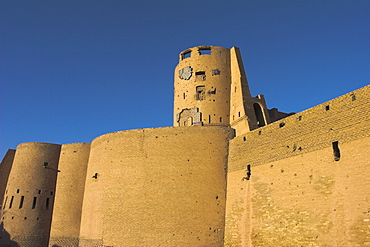
Timurid tilework on a tower of The Citadel (Qala-i-Ikhtiyar-ud-din), originally built by Alexander the Great, but in its present form by Malik Fakhruddin in 1305AD, Herat, Herat Province, Afghanistan, Asia
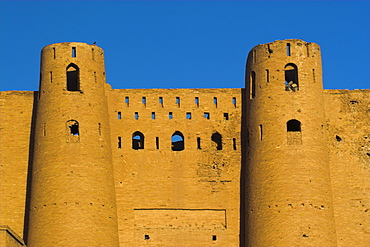
Inside the Citadel (Qala-i-Ikhtiyar-ud-din), originally built by Alexander the Great but built in its present form by Malik Fakhruddin in 1305 AD, Herat, Afghanistan, Asia

Dunluce Castle, originally occupied by the MacQuillan family and later the MacDonnells, besieged by the British in the 16th century, Portrush, County Antrim, Ulster, Northern Ireland, United Kingdom, Europe

Neolithic burial chamber built between 4000 and 2000BC for communal burial of the dead, it would originally have been covered with earth or stones, Bodowyr Burial Chamber, Anglesey, North Wales, United Kingdom, Europe
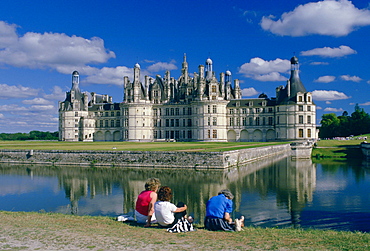
Tourists at the Chateau Chambord in the Loire Valley, France (Val de la Loire). Impressive turrets and towers are reflected in the waters of the moat which was originally to repel invaders from the castle.

Oast houses, originally used to dry hops in beer-making, converted into farmhouse accommodation at Hadlow, Kent, England, United Kingdom, Europe
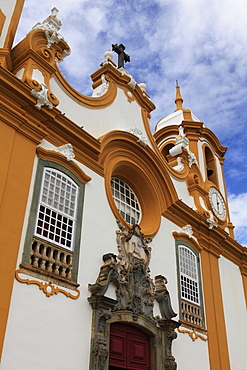
Sao Antonio church, originally a wooden chapel built in 1702, the time of the first explorers, its present facade dates from 1810 and is by Aleijadinho, Tiradentes, Minas Gerais, Brazil, South America

Men beating drums during the traditional farmers dance, originally from Wando Island, Chollanam Province, South Korea, Asia

Timurid tilework on a tower of The Citadel (Qala-i-Ikhtiyar-ud-din), originally built by Alexander the Great, but in its present form by Malik Fakhruddin in 1305AD, Herat, Herat Province, Afghanistan, Asia
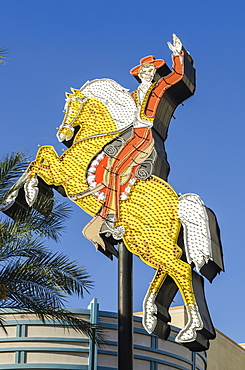
Hacienda Horse and Rider neon was originally installed at the Hacienda Hotel Hotel in 1967, Neon Museum, Las Vegas, Nevada, United States of America, North America
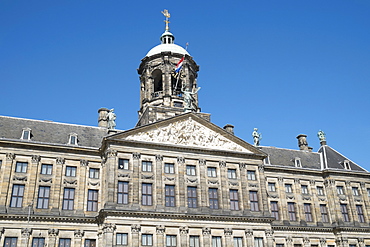
The Royal Palace, built in 1648, originally the Town Hall, Dam Square, Amsterdam, Netherlands, Europe
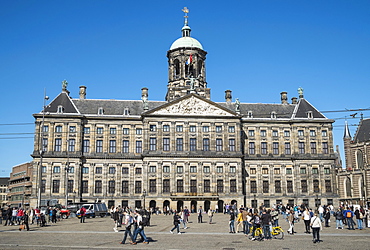
The Royal Palace, built in 1648, originally the Town Hall, Dam Square, Amsterdam, Netherlands, Europe
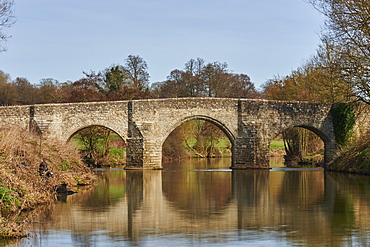
Fishermen next to Teston Bridge over the River Medway, originally built in 14th century, near Maidstone, Kent, England, United Kingdom, Europe

Inside the Citadel (Qala-i-Ikhtiyar-ud-din), originally built by Alexander the Great, but in its present form by Malik Fakhruddin in 1305AD, Herat, Herat Province, Afghanistan, Asia

Oast houses, originally used to dry hops in beer-making, converted into farmhouse accommodation at Tudeley, Kent, England, United Kingdom, Europe

Hyde Park Barracks, originally an Immigration Depot for single female immigrants seeking work as domestic servants, Sydney, New South Wales, Australia, Pacific
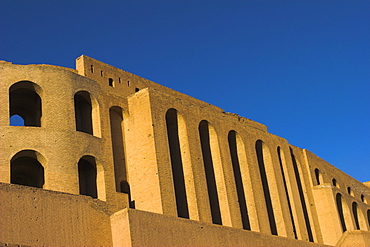
Inside the Citadel (Qala-i-Ikhtiyar-ud-din), originally built by Alexander the Great, but in its present form by Malik Fakhruddin in 1305AD, Herat, Herat Province, Afghanistan, Asia
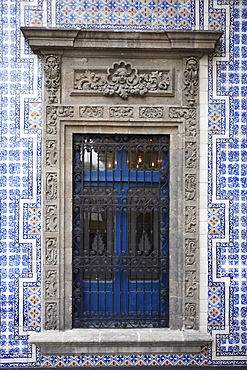
Window, Casa de los Azulejos (House of Tiles), originally a palace, Sanborn's department store, Mexico City, Mexico, North America
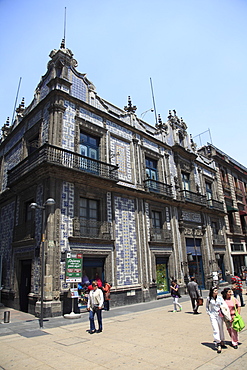
Sanborns department store, Casa de los Azulejos (House of Tiles), originally a palace, Mexico City, Mexico, North America

Dunluce Castle, originally occupied by the MacQuillan family and later the MacDonnells, besieged by the British in the 16th century, Portrush, County Antrim, Ulster, Northern Ireland, United Kingdom, Europe
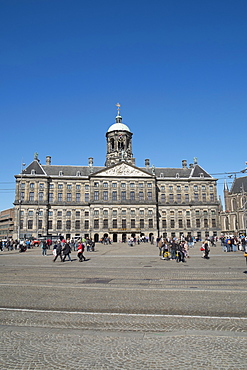
The Royal Palace, built in 1648, originally the Town Hall, Dam Square, Amsterdam, Netherlands, Europe
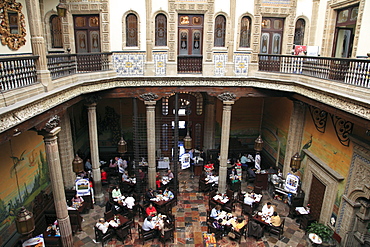
Restaurant, SanbornÔøOs department store, Casa de los Azulejos (House of Tiles), originally a palace, Mexico City, Mexico, North America
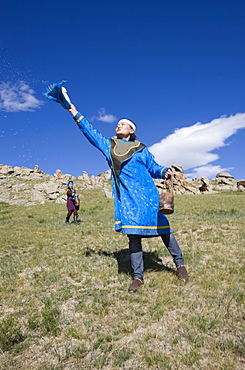
Horse milk is sprinkled into the four directions, as offerings to the nature spirits of the area, the sadak, or ?owners Of the earth.? Sometimes vodka is used instead, or as well. Milk is sacred to the mongol shamans, who believe that life on earth is descended from beings who originally came here on winged horses. Here two young female shamans make the offering in a ritual manner. Countryside mongols make this offering every morning on waking up; they usually also offer smoke, that the wind carries around the world as a prayer for harmony and prosperity. 13th century national park, tov province, mongolia. 13th century national park comprises chinggis khan's giant statue museum and live museum "town from 13 century". The ancient nomadic mini kingdom is located in the distance of 130 km east of ulaanbaatar in area of erdene zuu of tov province. It takes 2 hours driving on paved road. In the live 13th century kingdom one will see and experience the authentic lifestyle of mongols, who were lived in powerful mongol empire?s Period. This place gives you a same feeling that famous traveler marco polo and william rubruck felt once upon time
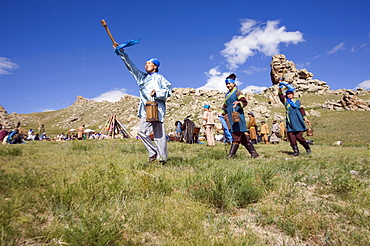
Horse milk is sprinkled into the four directions, as offerings to the nature spirits of the area, the sadak, or ?owners Of the earth.? Sometimes vodka is used instead, or as well. Milk is sacred to the mongol shamans, who believe that life on earth is descended from beings who originally came here on winged horses. Here two young female shamans make the offering in a ritual manner. Countryside mongols make this offering every morning on waking up; they usually also offer smoke, that the wind carries around the world as a prayer for harmony and prosperity. 13th century national park, tov province, mongolia. 13th century national park comprises chinggis khan's giant statue museum and live museum "town from 13 century". The ancient nomadic mini kingdom is located in the distance of 130 km east of ulaanbaatar in area of erdene zuu of tov province. It takes 2 hours driving on paved road. In the live 13th century kingdom one will see and experience the authentic lifestyle of mongols, who were lived in powerful mongol empire?s Period. This place gives you a same feeling that famous traveler marco polo and william rubruck felt once upon time
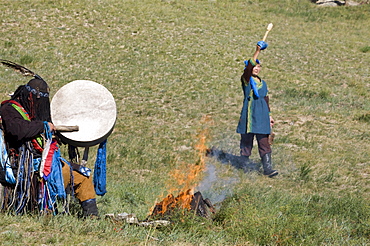
Horse milk is sprinkled into the four directions, as offerings to the nature spirits of the area, the sadak, or ?owners Of the earth.? Sometimes vodka is used instead, or as well. Milk is sacred to the mongol shamans, who believe that life on earth is descended from beings who originally came here on winged horses. Here two young female shamans make the offering in a ritual manner. Countryside mongols make this offering every morning on waking up; they usually also offer smoke, that the wind carries around the world as a prayer for harmony and prosperity. 13th century national park, tov province, mongolia. 13th century national park comprises chinggis khan's giant statue museum and live museum "town from 13 century". The ancient nomadic mini kingdom is located in the distance of 130 km east of ulaanbaatar in area of erdene zuu of tov province. It takes 2 hours driving on paved road. In the live 13th century kingdom one will see and experience the authentic lifestyle of mongols, who were lived in powerful mongol empire?s Period. This place gives you a same feeling that famous traveler marco polo and william rubruck felt once upon time
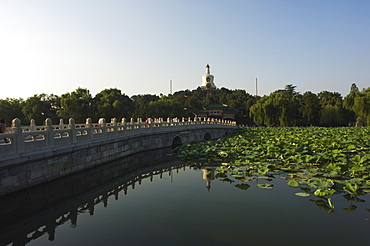
Baitai White Dagoba on Jade Islet, originally built in 1651 for a visit by the Dalai Lama, Beihai Park, Beijing, China, Asia
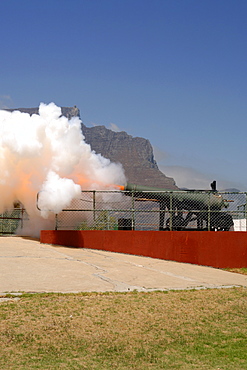
The noon gun firing in Cape Town.
The daily noon gun is Cape Town’s oldest living tradition and the two cannons used are the oldest guns in daily use in the world. They have marked the midday hour in the mother city in this distinctive, albeit noisy manner since early 1806. The cannons were cast in Britain in 1794 and still bear the royal crest of King George the third. The firing of the cannon was originally to give ships in the bay a means of re-setting their clocks accurately.
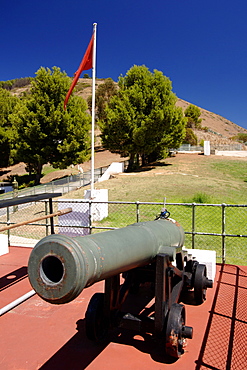
View of one of the two noon guns at Lion Battery on Signal Hill in Cape Town.
The daily noon gun is Cape Town’s oldest living tradition and the two cannons used are the oldest guns in daily use in the world. They have marked the midday hour in the mother city in this distinctive, albeit noisy manner since early 1806. The cannons were cast in Britain in 1794 and still bear the royal crest of King George the third. The firing of the cannon was originally to give ships in the bay a means of re-setting their clocks accurately.
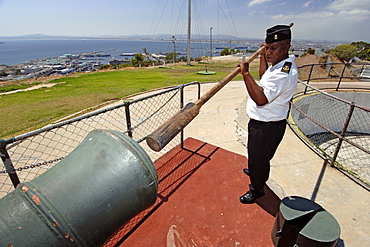
Chief Petty Officer Dudley Malgas using a wooden ram rod to push the charge into the muzzle of the noon gun cannon in Cape Town.
The daily noon gun is Cape Town’s oldest living tradition and the two cannons used are the oldest guns in daily use in the world. They have marked the midday hour in the mother city in this distinctive, albeit noisy manner since early 1806. The cannons were cast in Britain in 1794 and still bear the royal crest of King George the third. The firing of the cannon was originally to give ships in the bay a means of re-setting their clocks accurately.
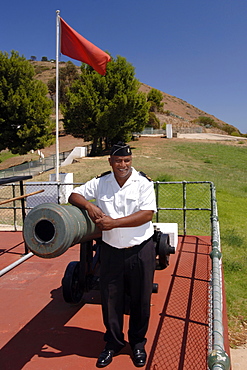
Chief Petty Officer Dudley Malgas of the South African Navy posing alongside the noon gun cannon in Cape Town. CPO Malgas has been in charge of firing the canon since 1995.
The daily noon gun is Cape Town’s oldest living tradition and the two cannons used are the oldest guns in daily use in the world. They have marked the midday hour in the mother city in this distinctive, albeit noisy manner since early 1806. The cannons were cast in Britain in 1794 and still bear the royal crest of King George the third. The firing of the cannon was originally to give ships in the bay a means of re-setting their clocks accurately.
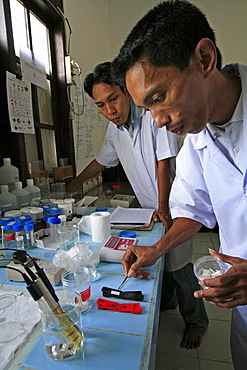
Indonesia laboratory testing drinking water. Photograph taken in meulaboh, aceh province -december 2006, 2 years after tsunami of december 26th 2004 devastated much of coastal region. Taken to illustrate reconstruction work projects of (catholic relief services) of sponsored photo tour. terchnician : every house well gets tested. Unicef originally helped up to support other ngos in area, helps staff salaries provides us with equipment. coordinates activities with local government. water in local wells is quite contaminated, especially with arsenic, as well as nitrates, nitrites, iron, manganese fluoride. water became salinated after tsunami. We test here both water from shallow deep wells
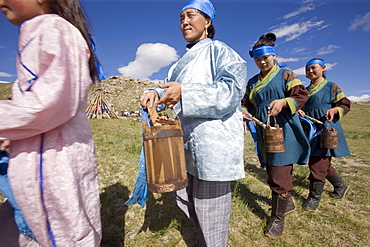
Horse milk is sprinkled into the four directions, as offerings to the nature spirits of the area, the sadak, or ?owners Of the earth.? Sometimes vodka is used instead, or as well. Milk is sacred to the mongol shamans, who believe that life on earth is descended from beings who originally came here on winged horses. Here two young female shamans make the offering in a ritual manner. Countryside mongols make this offering every morning on waking up; they usually also offer smoke, that the wind carries around the world as a prayer for harmony and prosperity. 13th century national park, tov province, mongolia. 13th century national park comprises chinggis khan's giant statue museum and live museum "town from 13 century". The ancient nomadic mini kingdom is located in the distance of 130 km east of ulaanbaatar in area of erdene zuu of tov province. It takes 2 hours driving on paved road. In the live 13th century kingdom one will see and experience the authentic lifestyle of mongols, who were lived in powerful mongol empire?s Period. This place gives you a same feeling that famous traveler marco polo and william rubruck felt once upon time
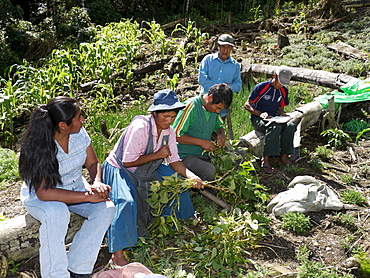
BOLIVIA Visiting the farm of Wilfredo Castro, his wife Vicencia Choque and uncle Manuel Villalobes in Colonia 7 Estrellas, near Caranavi. They are exemplary benefeciaries of the FUNDAWI project, gropwing many kinds of aromatic and medicinal herbs, as well as the usual food crops such as maize, beans, fruit and vegetables, ertc. Their cash crop is coffee. Originally from La Paz and the Alti Plano, they have lived in the yngas for over 20 years as successful farmers. Daniel Tarqui (red and blue shirt), FUNDAWI technician, and Delia Cruz Condori (left) giving advice
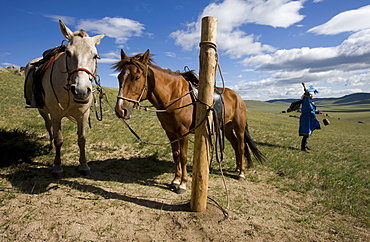
Horse milk is sprinkled into the four directions, as offerings to the nature spirits of the area, the sadak, or ?owners Of the earth.? Sometimes vodka is used instead, or as well. Milk is sacred to the mongol shamans, who believe that life on earth is descended from beings who originally came here on winged horses. Here two young female shamans make the offering in a ritual manner. Countryside mongols make this offering every morning on waking up; they usually also offer smoke, that the wind carries around the world as a prayer for harmony and prosperity. 13th century national park, tov province, mongolia. 13th century national park comprises chinggis khan's giant statue museum and live museum "town from 13 century". The ancient nomadic mini kingdom is located in the distance of 130 km east of ulaanbaatar in area of erdene zuu of tov province. It takes 2 hours driving on paved road. In the live 13th century kingdom one will see and experience the authentic lifestyle of mongols, who were lived in powerful mongol empire?s Period. This place gives you a same feeling that famous traveler marco polo and william rubruck felt once upon time
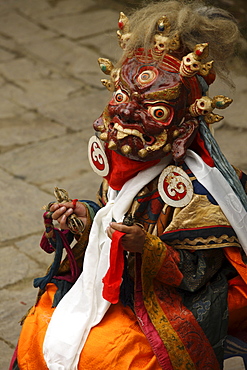
A solitary mask dancer appears wearing a frightening mask and silk brocade. they circle the courtyard with sprightly leaps. called protectors of faith, or dharmapdla, the origins of figures like these can be traced back to the pre-aryan peoples of india. originally known as yaksas (literally, a wondrous thing), they were tree spirits, who were accepted by the buddhists as defenders of the faith. in nepal and tibet, as in india, local deities were converted into protectors. a devotee of an alien sect devised a means to humiliate the buddha and his disciples. the buddha discovered it and succeeded in converting him to his teaching. due to lack of wisdom, the buddha remarked, some could not realize the goodness of his disciples and he compared the ignorant to the blind and the wise to those who have eyes.nobody is condemned in buddhism, for greatness is latent even in the seemingly lowliest just as lotuses spring from muddy ponds. -the dhammapada. solu khumbu, nepal
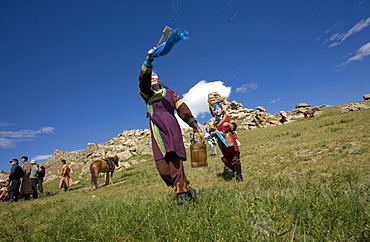
Horse milk is sprinkled into the four directions, as offerings to the nature spirits of the area, the sadak, or ?owners Of the earth.? Sometimes vodka is used instead, or as well. Milk is sacred to the mongol shamans, who believe that life on earth is descended from beings who originally came here on winged horses. Here two young female shamans make the offering in a ritual manner. Countryside mongols make this offering every morning on waking up; they usually also offer smoke, that the wind carries around the world as a prayer for harmony and prosperity. 13th century national park, tov province, mongolia. 13th century national park comprises chinggis khan's giant statue museum and live museum "town from 13 century". The ancient nomadic mini kingdom is located in the distance of 130 km east of ulaanbaatar in area of erdene zuu of tov province. It takes 2 hours driving on paved road. In the live 13th century kingdom one will see and experience the authentic lifestyle of mongols, who were lived in powerful mongol empire?s Period. This place gives you a same feeling that famous traveler marco polo and william rubruck felt once upon time
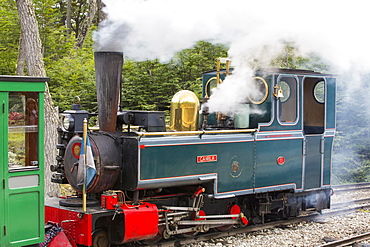
The Southern Fuegian Railway, or the railway at the end of the world near the town of Ushuaia which is the capital of Tierra del Fuego, in Argentina. It was originally built to transport prisoners from the local prison.
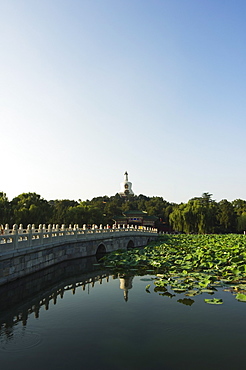
Baitai White Dagoba on Jade Islet, originally built in 1651 for a visit by the Dalai Lama, Beihai Park, Beijing, China, Asia
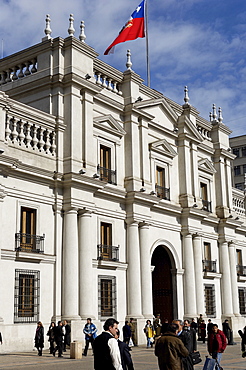
La Moneda Palace, designed by the Italian architect Joaquin Toesca, originally the Mint, later the official residence of the President and the administrative centre of the Government, Santiago, Chile, South America
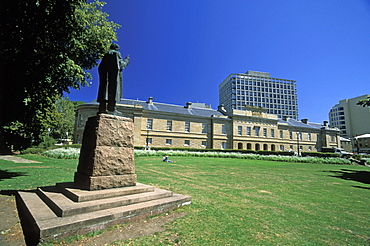
Parliament House, built 1835, and originally a customs house, Parliament Square, Hobart, Tasmania, Australia, Pacific
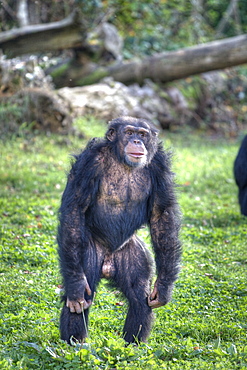
Captive adult Chimpanzees Pan troglodytes verus Standing in La Vallee Des Singes, Poitou - Charentes France. More info: Status, endangered. This rare sub species of chimp came from a breeding centre in Holland. They were originally rescued from a laboratory when the Netherlands at last made it illegal to experiment on primates.
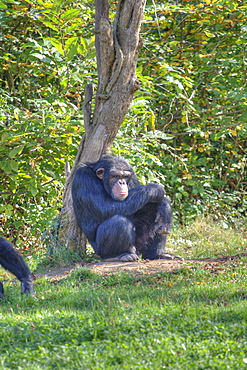
Captive adult Chimpanzees Pan troglodytes verus in La Vallee Des Singes, Poitou - Charentes France. More info: Status, endangered. This rare sub species of chimp came from a breeding centre in Holland. They were originally rescued from a laboratory when the Netherlands at last made it illegal to experiment on primates.
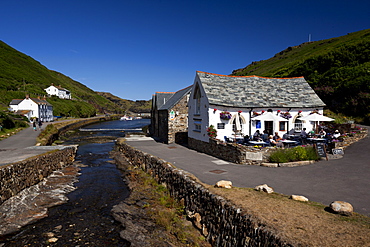
The Harbour Light Cafe, built originally in the 16th-century, but destroyed in floods in 2004 and rebuilt April 2006) and Valency River outlet, Boscastle Harbour, Valency Valley. Boscastle, Cornwall, England, United Kingdom, Europe
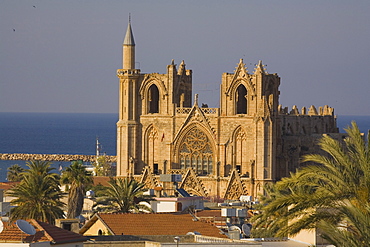
The Lala Mustafa Pasa Camii Mosque, originally known as the Saint Nicolas Cathedral and later as the Ayasofya, Saint Sophia, Mosque of Magusa, Famagusta, Gazimagusa, North Cyprus, Cyprus
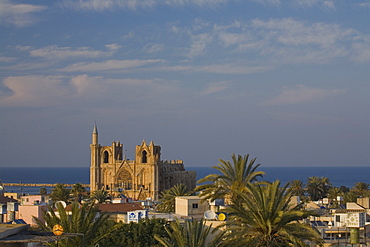
The Lala Mustafa Pasa Camii Mosque, originally known as the Saint Nicolas Cathedral and later as the Ayasofya, Saint Sophia, Mosque of Magusa, Famagusta, Gazimagusa, North Cyprus, Cyprus
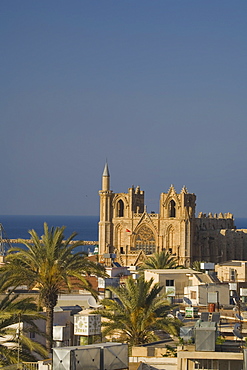
The Lala Mustafa Pasa Camii Mosque, originally known as the Saint Nicolas Cathedral and later as the Ayasofya, Saint Sophia, Mosque of Magusa, Famagusta, Gazimagusa, North Cyprus, Cyprus
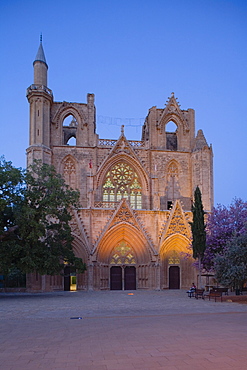
The Lala Mustafa Pasa Camii Mosque, originally known as the Saint Nicolas Cathedral and later as the Ayasofya, Saint Sophia, Mosque of Magusa, Famagusta, Gazimagusa, North Cyprus, Cyprus
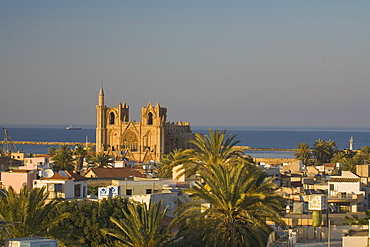
The Lala Mustafa Pasa Camii Mosque, originally known as the Saint Nicolas Cathedral and later as the Ayasofya, Saint Sophia, Mosque of Magusa, Famagusta, Gazimagusa, North Cyprus, Cyprus
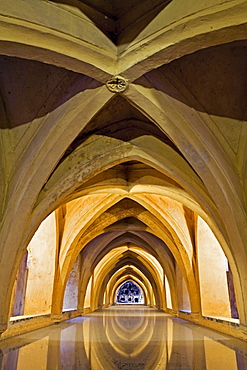
Los Banos de Dona MarÌa de Padilla, Alc·zar of Seville, royal palace originally a Moorish fort, Seville, Spain
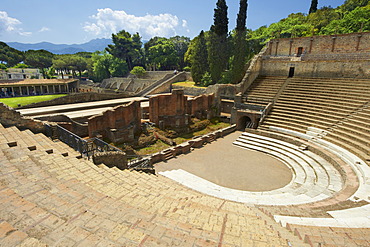
The Roman Great Theatre of Pompeii, seating up to 5000 spectators the theatre was originally built in Hellenistic time, 200-150 B.C, Italy, Europe
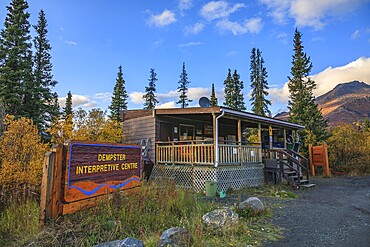
The Dempster Interpretive Centre at the entrance of the campground in Tombstone Territorial Park in the Yukon Territory, Canada
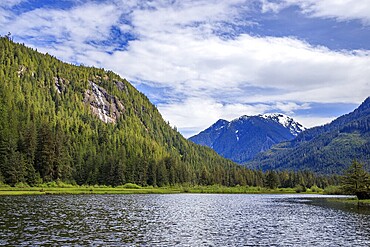
Waterfalls on the cliffs overlooking the scenic Stafford Estuary Conservancy at the head of Loughborough Inlet, on the west coast of British Columbia, Canada
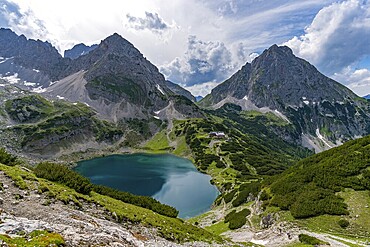
Panoramic mountain tour in Ehrwald via the Tajatorl to Drachensee, Coburger Hut and Seebensee in the Tiroler Zugspitz Arena
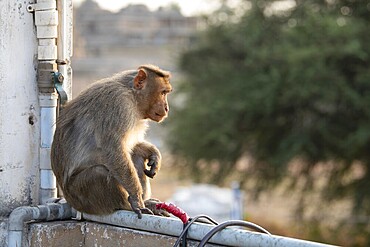
Barbary macaque ape, rhesus monkey sitting on a wall, wildlife and urban environment in India, jungle and rainforest animal in the city
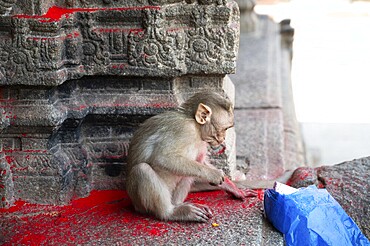
Rhesus monkey, cheeky barbary macaque ape with red holi powder in plastic bag, conflict of wildlife and urban environment in India, animal in city
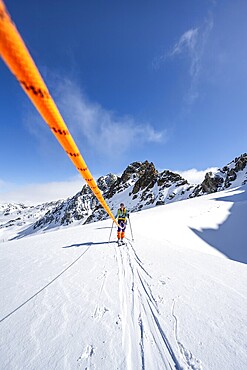
Ski tourer with rope, rope team on the Vadret da Porchabella glacier on the ascent to the summit of Piz Kesch, mountain landscape in winter, alpine tour, ski tour Bündner Haute Route, Albula Alps, Rhaetian Alps, Grisons, Eastern Switzerland, Switzerland
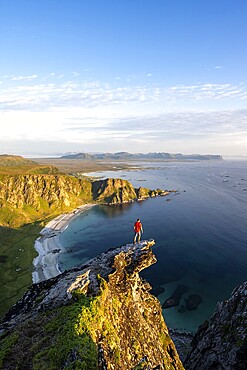
Evening mood, mountaineer standing on a rocky outcrop on the summit of Måtind, view of coastal landscape, Høyvika beach and sea, Måtinden, Andøya island, Vesterålen, Nordland Norway
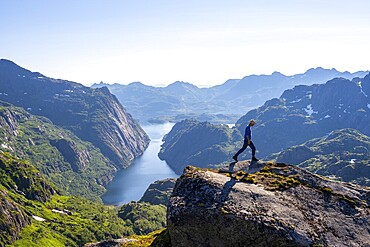
Mountaineer, young man hiking in front of mountain landscape, fjord Trollfjord and mountains, hike to Trollfjord Hytta, at Trollfjord and Raftsund, Lofoten, Nordland, Norway
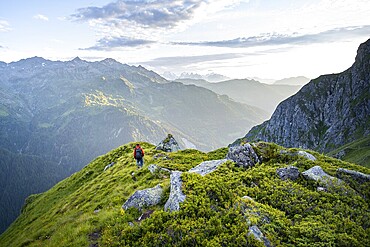
Mountaineers in a picturesque mountain landscape in the atmospheric evening light, view from the Cabane du Louvie, Valais Alps, Val de Bagnes, Valais, Switzerland
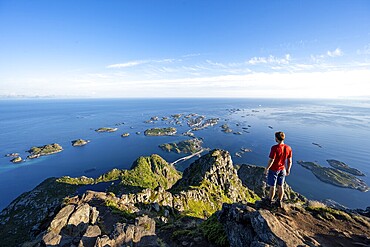
View of numerous small rocky islands with houses, mountaineers on the summit of Festvågtind, view of Henningsvær, Vågan, Lofoten, Nordland, Norway
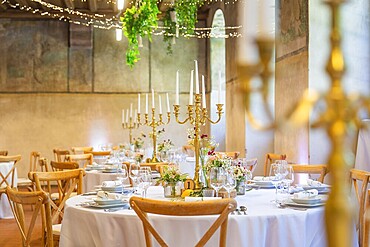
Elegant and romantic wedding tables with candles and natural decoration, event and wedding location Kloster Lorch, Lorch, Germany
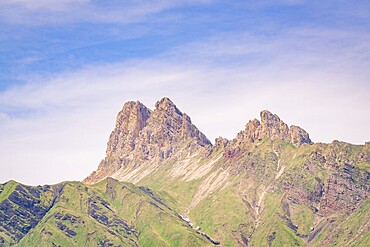
Mountain peaks rise into the sky, surrounded by green slopes and blue sky, hike to the Schlehrn, Alpe di Siusi, Dolomites, South Tyrol, Italy
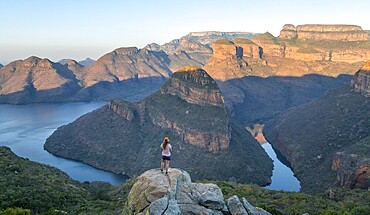
Hiker enjoying panorama, Blyde River Canyon with summit Three Rondawels, view of canyon with river Blyde River and table mountains, canyon landscape, Panorama Route, Mpumalanga, South Africa
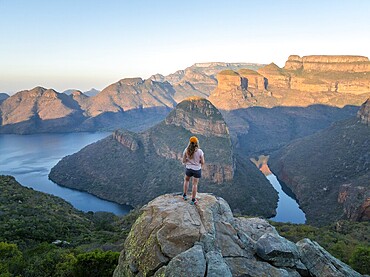
Hiker enjoying panorama, Blyde River Canyon with summit Three Rondawels, view of canyon with river Blyde River and table mountains, canyon landscape, Panorama Route, Mpumalanga, South Africa
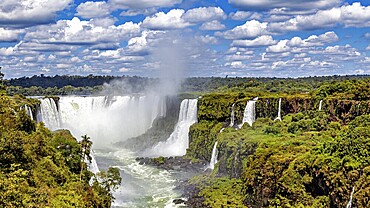
Waterfalls in the dense jungle, surrounded by lush greenery under a cloudy sky, The Iguazu Falls between Argentina and Brazil


